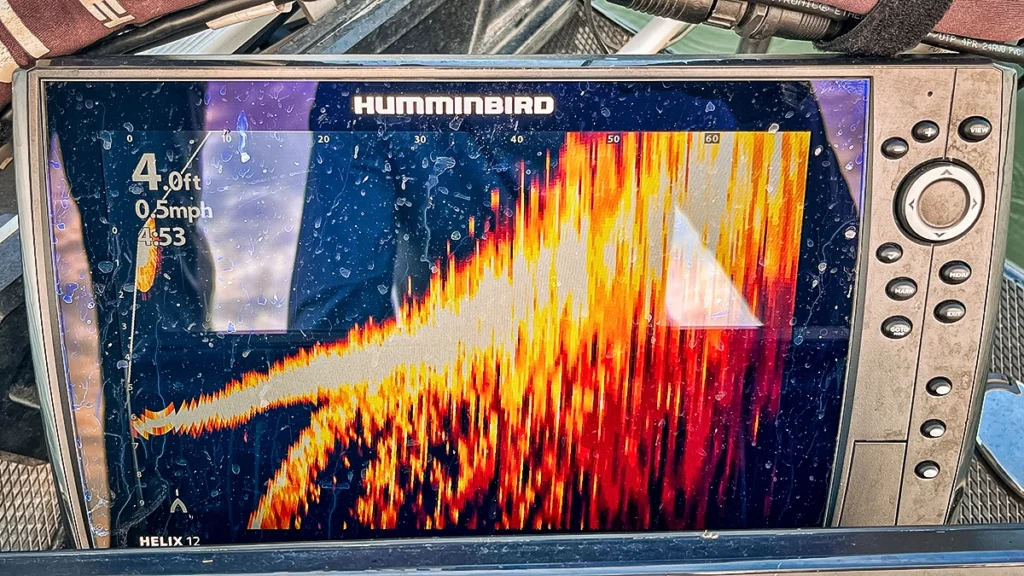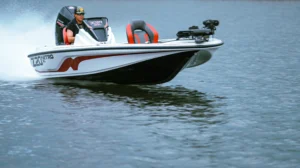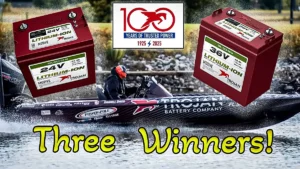There is both a time and place for fishing fast and for fishing slow. Fishing slow can mean several things: slow rolling a spinnerbait, maybe working your jig back to the boat in a painstakingly slow fashion, or it may entail deadsticking baits for tight lipped bass.
Winter Bass Behavior
As winter water temperatures drop, a bass’s willingness to search out a bait dwindles. That’s when soaking or deadsticking a bait can be very effective.
When bass are inactive or just waiting for that prime opportunity to pull up on a point and feed, they’ll sit behind that point or on either side of it where the water is deeper. By sitting in these deeper holes, a bass will maintain the element of surprise as its prey swims higher in the water column.
Deadsticking, as you might have guessed, is letting a bait sit motionless on the bottom.
Deadstick Presentations

The presentations I like to deadstick have one thing in common: they allow me to keep the bait in the bass’s strike zone for an extended period of time. By being able to keep my bait in front of a bass for as long as possible, that bass will become curious about it, and eventually move on it to check it out.
The first of three presentations that I use to deadstick baits for winter bass is a Carolina rig. I can cast out a C-rig and just slowly drag it along the bottom and never fully pick it up; this will create the maximum amount of silt disturbance, mimicking a crawfish scooting along.
Carolina Rig Setup
When setting up a Carolina rig for deadsticking, use a larger weight — a 1/2- or 3/4-ounce brass C-rig or tungsten barrel weight does the trick — and a soft plastic stickbait. The big weight keeps the bait down in the water column where the inactive bass are hanging out.
When choosing that bait, keep in mind that since you’re letting the bait soak, you’ll want a finesse plastic that will still have some action when not moving. A Zoom Fluke Stick or Fluke Stick Jr, a 4-inch Yamamoto Senko, or a Lake Fork Ring Fry are all great choices.

Leader Length
The clarity of the water will dictate the length of your fluorocarbon leader. I’ll begin by using an 18-inch Seaguar Gold Label Fluorocarbon leader and increase that to 30 inches if the water is clear.
Drag a Jig
A jig is another good presentation to put in front of lethargic bass. When you slowly drag a jig along the bottom and get it into that strike zone, you can just let that jig sit there. Even the most sluggish bass will eat it.
Using the smallest weight jig possible is key here, as you want to keep the profile of the jig small. At the same time, you want the jig to get down to the bottom quickly and keep it in contact with the bottom. Most of the time, a 3/8- or 1/2-ounce jig will get the job done.
The great thing about deadsticking a jig is you can play around with the plastic trailer you are using to change its profile in the water. If you want it to have a bigger profile, use a big chunk or a creature bait. If the bass are very tight-lipped and want a small meal, then scale down that chunk to a smaller one, or use a double-tail grub.

Soak a Senko
More than likely, if you’ve fished a tough tournament or had a co-angler in the back of your boat, you’ve heard the phrase, “soaking a Senko.” This technique is probably one of the most common deadsticking techniques for targeting inactive bass.
You need to Texas-rig a soft plastic stickbait — weightless usually, but a small 1/32- to 1/16-ounce tungsten weight can be put in front of the bait if you need to get down deeper). Then, cast it out to your target, let it sink, soak it, reel up some slack a bit. Repeat.
This is a great technique for fishing around cover where bass may be laying in or around laydowns, brush piles, or fish cribs.
A wide variety of Senko sizes can be used for soaking, the standard 5-inch works great, but a smaller 4-inch or a larger 6-incher can be used, depending on the lure profile the bass wants.
Regardless of the bait, I use a Lazer TroKar Magworm hook (3/0 – 5/0), because I can set the hook with ease and get a solid hook-up every time.
Deadsticking: Casting and Boat Control
When you are deadsticking a bait, you want to pay close attention to your boat control. If anything — the wind, the current — is moving your boat, then your bait will be moving under the water, and thus not be sitting motionless and blowing the deadsticking presentation.
Boat control is also paramount for making pinpoint casts to that key piece of cover where you want to soak your bait. Relying on modern technology for boat control is a must.
If I’m fishing around shallow water targets like a boat docks or a flat, I’ll cruise along with my Minn Kota Ultrex trolling motor at a speed that allows me to cover water quickly and steadily. When I come across a potential target area, I’ll deploy my two Raptor shallow water anchors to hold the boat in place.
The same holds for fishing an offshore target. I’ll get my boat into the desired position and engage the Spot-Lock on the Ultrex. For pinpoint adjustments when I’m spot locked, I’ll use the Jog feature to bump my boat 5 feet in the desired direction.
When the water temperatures drop and you still want to catch some bass, take a stab at deadsticking some baits.












